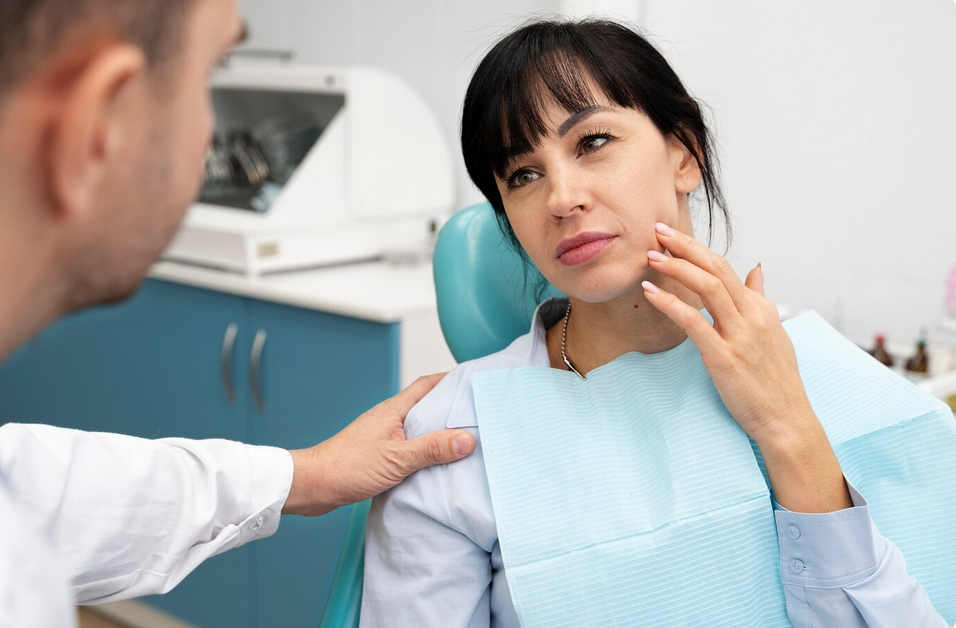Understanding How Invisalign and Similar Treatments May Help or Hurt Jaw Joint Disorders
Temporomandibular joint disorder (commonly known as TMJ or TMD) is a condition that affects the joints and muscles that control jaw movement. Symptoms may include jaw pain, clicking or popping sounds, headaches, difficulty chewing, or even jaw locking. If you suffer from TMJ and are considering orthodontic treatment like clear aligners (e.g., Invisalign), it’s essential to understand how these appliances interact with your condition.
In this article, we’ll explore how clear aligners can affect TMJ, when they may help, when caution is needed, and what patients should know before starting treatment.
🦷 What Is TMJ/TMD?
The temporomandibular joints (TMJs) connect your lower jaw (mandible) to your skull. TMJ disorders refer to pain or dysfunction in these joints or the surrounding muscles.
Common Symptoms of TMJ:
- Jaw pain or tenderness
- Clicking, popping, or grinding noises
- Stiffness or limited jaw movement
- Earaches or a sense of fullness in the ear
- Headaches or neck pain
- Difficulty chewing or an uneven bite
🧪 Can Clear Aligners Like Invisalign Help TMJ?
Yes—in some cases, clear aligners can provide symptom relief and improve jaw function.
✅ When Clear Aligners May Help:
- Improved Bite Alignment
Malocclusion (bad bite) can place uneven stress on the jaw joint. Invisalign can gradually reposition your teeth to a healthier alignment, reducing joint strain. - Even Distribution of Pressure
Clear aligners distribute biting forces evenly across your teeth, unlike some traditional braces that may create uneven force initially. - Splint-Like Effect
The aligners act as a barrier between the upper and lower teeth—similar to a nightguard—reducing grinding and clenching, which are major TMJ aggravators. - Muscle Relaxation
By reducing abnormal contact between the teeth, some patients experience relief from tense jaw muscles over time.
⚠️ When to Be Cautious: TMJ and Clear Aligner Risks
Not all TMJ patients benefit from aligners—in fact, some may experience worsening symptoms if treatment isn’t carefully managed.
⚠️ Potential Challenges:
- Jaw Repositioning May Aggravate Symptoms
Moving teeth can temporarily alter your bite, and any instability during the process can stress the jaw joint. - Increased Pressure on Sensitive Muscles
Early stages of treatment may put new pressure on your jaw muscles, leading to temporary discomfort. - Inadequate Diagnosis or Planning
Starting aligner treatment without a thorough TMJ evaluation can result in unpredictable outcomes.
👨⚕️ What a TMJ-Savvy Orthodontist Will Do
If you have a history of TMJ disorder, your orthodontist will likely take extra precautions:
A Comprehensive Pre-Treatment Assessment May Include:
- Clinical evaluation of jaw movement and symptoms
- Dental X-rays or CBCT scan to assess the joint and bite
- Review of past TMJ treatments and pain patterns
- Custom treatment planning to minimize joint strain
Adjustments They Might Make:
- Slower, more gradual tooth movement
- Prioritizing bite stabilization before cosmetic corrections
- Collaboration with a TMJ specialist, physical therapist, or oral surgeon if needed
- Including exercises or appliances to manage symptoms alongside aligner therapy
🤝 Invisalign vs. Nightguards for TMJ
While both clear aligners and nightguards can look similar, they serve different purposes:
| Feature | Invisalign/Clear Aligners | Nightguard (TMJ splint) |
|---|---|---|
| Primary Purpose | Move teeth into better alignment | Protect joints and teeth during bruxism or clenching |
| Worn During | Typically 20–22 hours/day | Usually only at night |
| Customization | Designed to shift teeth gradually | Designed to protect jaw and reduce muscle tension |
| Benefit for TMJ | Potentially positive (case-dependent) | Usually positive, especially for pain relief |
Some patients use both sequentially—aligners during active treatment, then nightguards for long-term TMJ management post-treatment.
🧠 Tips for TMJ Patients Considering Clear Aligners
- Choose an Orthodontist with TMJ Experience
Not all Invisalign providers are trained to manage complex TMJ cases. Ask specifically about their experience. - Track Symptoms Throughout Treatment
Keep a symptom journal to note any increases in jaw pain, clicking, or headaches. - Follow Instructions Precisely
Wearing aligners for the recommended duration ensures consistent force, reducing stress on the jaw. - Avoid Clenching with Aligners In
If you catch yourself clenching, especially during stress or sleep, inform your doctor. A nightguard may still be needed. - Communicate Any Discomfort Early
If aligners cause worsening pain, your provider can pause, modify, or adjust your treatment plan to avoid further complications.
📈 What Happens After Invisalign if You Have TMJ?
After treatment, you’ll be given a retainer to maintain your results. If you have a history of TMJ issues, your orthodontist may:
- Customize your retainer to also act as a nightguard
- Recommend continued TMJ therapy (physical therapy, exercises, medication)
- Schedule more frequent check-ins to monitor joint function post-treatment
💬 Final Thoughts
Clear aligners like Invisalign can be an excellent treatment for patients with mild to moderate TMJ symptoms—but success depends heavily on the individual case and the provider’s expertise. With the right diagnostic approach and careful planning, many patients experience not only a straighter smile but also a reduction in jaw discomfort and improved bite function.




